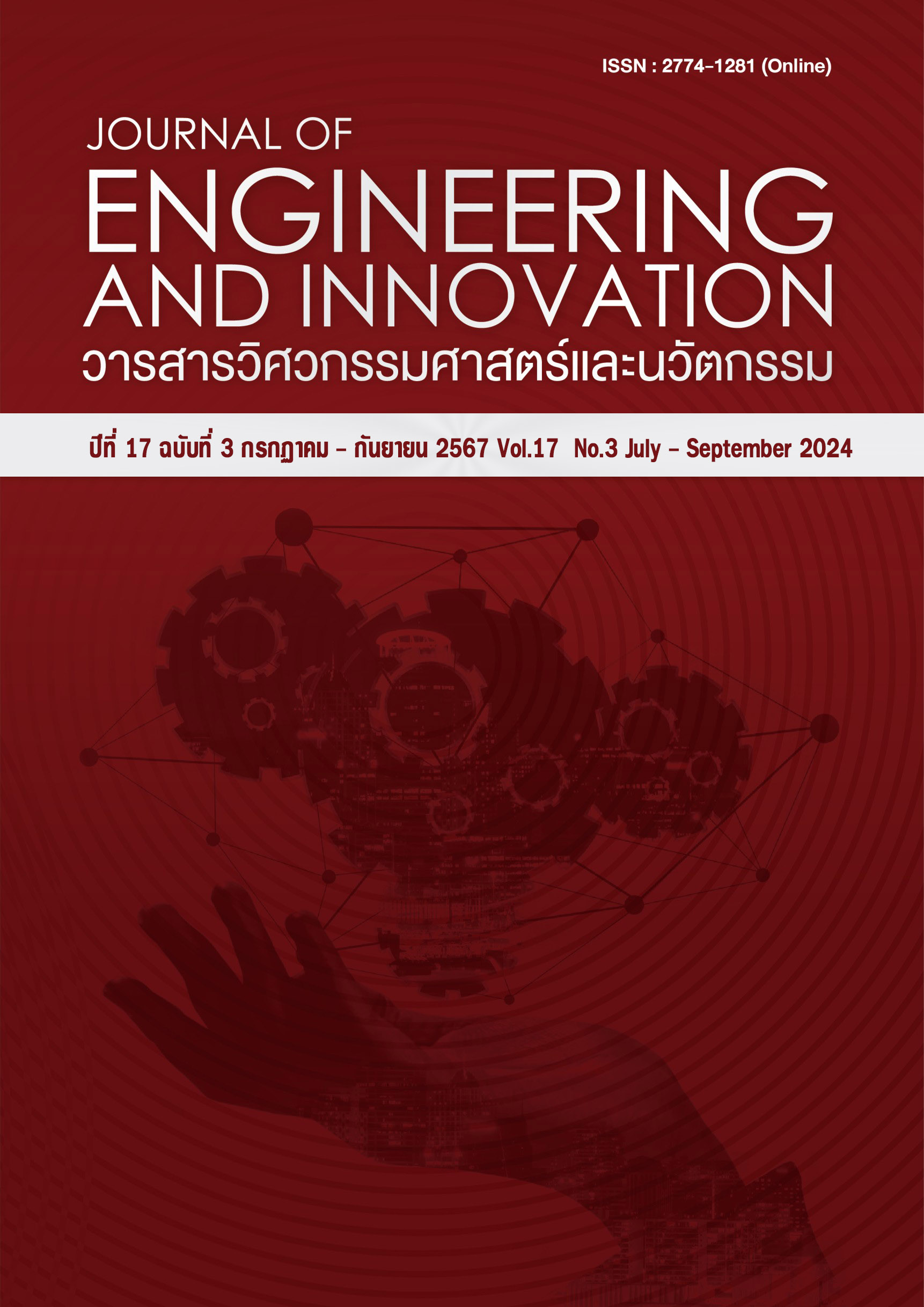Human pose recognition for improving K-Pop cover dance
Main Article Content
Abstract
Amidst the COVID-19 pandemic, restrictions affected various social activities, including K-pop cover dance learning. Consequently, K-pop cover dance classes shifted to online platforms, causing diminished effectiveness for learners. This challenge is exacerbated by the need for precise synchronization of body movements with specific music in K-pop cover dances. Online classes introduce additional obstacles as trainers struggle to provide accurate guidance. This study addresses this issue by leveraging human pose estimation and developing a system for enhancing online K-pop cover dance learning. The system detects and analyzes similarities between the movements of original and cover dancers, offering improvement suggestions and providing a cumulative score for the entire song. The exploration of dance with angular variations reveals consistently high similarity scores (ranging from 99.5 to 100.0 percent) throughout the video duration (1.16 minutes, processed by the computer). Despite scenarios involving videos of the original and cover dancers performing the same dance, or videos of the original dancer and a cover dancer with different individuals dancing to the same song, both scenarios maintain a significantly similar dance pattern. The dance scores consistently start at 22 percent, exhibiting an increasing trend up to 74.4 percent from the beginning to the end, demonstrating the system's effectiveness in supporting online K-pop cover dance learning.
Article Details
References
Hajji YEO. Analysis of the Global-Local- Global Strategy in K-pop Music Videos. 2021. Faculty of Economics and Business of University of Barcelona 2021.
Gnedash IA, Ivanov NS, Khaimina AD. The Korean wave as a tool of South Korea's soft power in 1990- 2020. Theories and Problems of Political Studies. 2021;10(2-1):44-55.
Gamra MB, Akhloufi MA. A review of deep learning techniques for 2D and 3D human pose estimation. Image and Vision Computing.
;114: 104282.
Badiola- Bengoa A, Mendez - Zorrilla A. A systematic review of the application of camerabased human pose estimation in the field of
sport and physical exercise. Sensors. 2021;21(18):5996.
Šajina R, Kos MI. Pose estimation, tracking and comparison. Croatian Science Foundation, the project. IP-2016-06-8345 (RAASS).
Peng F, Zhang H. Research on action recognition method of dance video image based on humancomputer interaction. Scientific Programming. 2021;2021.
Choi JH, Lee JJ, Nasridinov A. Dance self-learning application and its dance pose evaluations. Proceedings of the 36th Annual ACM Symposium on Applied Computing; 2021.
Broadwell P, Tangherlini TR. Comparative k-pop choreography analysis through deep - learning pose estimation across a large video corpus. DHQ: Digital Humanities Quarterly. 2021;15(1).
Zheng C, Wu W, Yang T, Zhu S, Chen C, Liu R, et al. Deep learning-based human pose estimation: A survey, Publisher, City, 2020.
Cao Z, Simon T, Wei SE, Sheikh Y. Real time multi- person 2d pose estimation using part affinity fields. Proceedings of the IEEE conference on computer vision and pattern recognition; 2017.
Wang Y, Li M, Cai H, Chen W, Han S. Lite Pose: Efficient Architecture Design for 2D Human Pose Estimation. Proceedings of the IEEE/ CVF Conference on Computer Vision and Pattern Recognition (CVPR). 2022: pp. 13126-13136. [12] Sun K, Xiao B, Liu D, Wang J. Deep high-resolution representation learning for human pose estimation, in: Proceedings of the IEEE/ CVF Conference on Computer Vision and Pattern Recognition. 2019, pp. 5693-5703.
Bazarevsky V, Grishchenko I, Raveendran K, Zhu T, Zhang F, Grundmann M. Blazepose: On-device real- time body pose tracking. arXiv. 2020; abs/2006.10204.
Sarah M, Natalie B, Connor M, Pascale J, Albert T, Kevin C, et al. Comparing the quality of human pose estimation with BlazePose or OpenPose. 2021 4th International Conference on BioEngineering for Smart Technologies ( BioSMART), Paris / Créteil, France. 2021, pp. 1-4.
Chan C, Ginosar S, Zhou T, Efros AA. Everybody dance now. Proceedings of the IEEE/ CVF International Conference on Computer Vision. 2019.
Sun K, Lan C, Xing J, Zeng W, Liu D, Wang J. Human pose estimation using global and local normalization. Proceedings of the IEEE
international conference on computer vision. 2017.
Kim Y, Kim D. Real- time dance evaluation by markerless human pose estimation. Multimedia Tools and Applications. 2018;77(23):31199-220.
Broadwell PM, Tangherlini TR. Comparative Kpop choreography analysis through deeplearning pose estimation across a large video corpus. Digital Humanities Quarterly. 2021;15(1).
Siriborvornratanakul T. A New Human Factor Study in Developing Practical Vision- Based plications with the Transformer- Based Deep Learning Model. Artificial Intelligence in HCI. 2022; 35: 436-447.
Zhao C, Uchitomi H, Ogata T, Ming X, Miyake Y. Reducing the device complexity for 3D human pose estimation: A deep learning approach using monocular camera and IMUs. Engineering Applications of Artificial Intelligence. 2023;124: 106639.
Kittipongdaja P, Siriborvornratanakul T. Automatic kidney segmentation using 2. 5D. ResUNet and 2. 5D DenseUNet for malignant
potential analysis in complex renal cyst based on CT images. EURASIP J. Image Video Process. 2022;1: 5.
Liu W, Bao Q, Sun Y, Mei T. Recent advances of monocular 2D and 3D human pose estimation: A deep learning perspective. ACM Computing Surveys. 2023; 55(4): 80, 1-41.
Pei Y, Yang W, Wei S, Cai R, Li J, Guo S, et al. Automated measurement of hip – knee– ankle angle on the unilateral lower limb X- rays using deep learning. Physical and Engineering Sciences in Medicine. 2021;44: 53–62.

